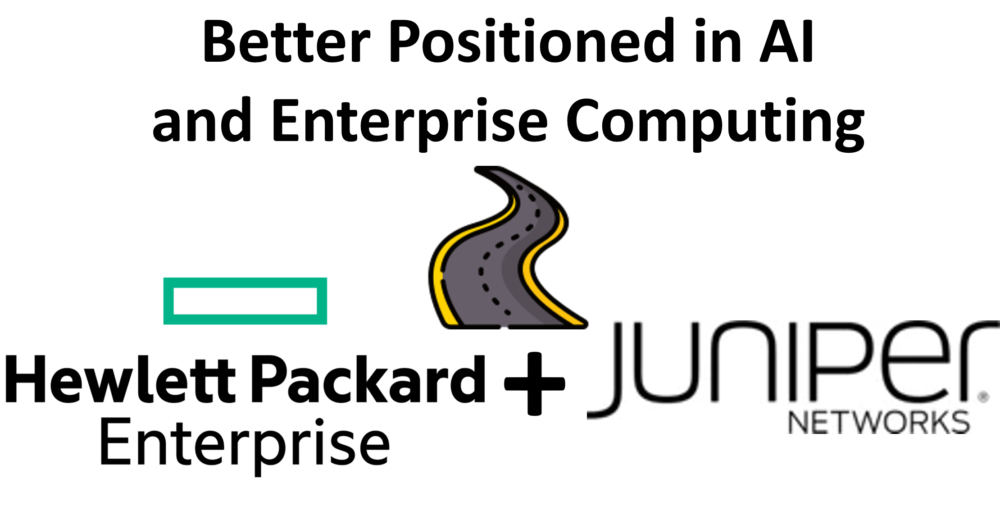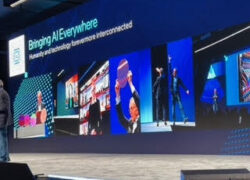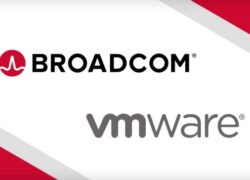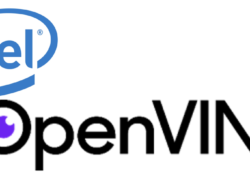HPE Intends to Acquire Juniper Networks: A Perspective
by
Jean S. Bozman, President,
Cloud Architects Advisors LLC
and
Srini Chari, Ph.D., MBA and M. R. Pamidi, Ph.D.,
Cabot Partners
The Deal
On January 09, 2024, Hewlett Packard Enterprise (HPE) announced its intent to acquire Juniper Networks in an all-cash transaction for $40.00 per share, representing an equity value of approximately $14 billion. The proposed acquisition is subject to regulatory approvals in the US, the EU, and Asia. Upon completion of the transaction, Juniper CEO Rami Rahim will lead the combined HPE networking business, reporting to HPE President and CEO Antonio Neri.
The transaction is currently expected to close in late CY2024 or early CY2025, subject to receipt of regulatory approvals, approval of the transaction by Juniper shareholders, and satisfaction of other customary closing conditions.
Background Before the Deal
With the Juniper acquisition, HPE plans to strengthen its position in end-to-end computing, distributed and multi-cloud deployments for enterprise, high-performance computing (HPC), and AI workloads. The ability to scale up customers’ AI environments will be critical to adopting AI and AI-enabled enterprise workloads.
Already a top-tier provider of IT systems, servers, storage, and networking systems, HPE competes with Cisco, Dell Technologies, and IBM for enterprise deals, as shown by analyst data from multiple market research firms (including IDC, Statista, and IT Candor, among others). In 2024-2025, the speed of data access and transit in multi-cloud deployments is a priority for all AI, HPC, and enterprise solution providers. Those providers that optimize performance for Core, Cloud, and Edge have an edge to gain additional market share worldwide.
Juniper competes most closely with networking vendors, including Arista Networks, Cisco Systems, Extreme Networks, and Huawei Technologies. Industry estimates report that Juniper has more than 10% of the networking/switching market share – with between one-quarter to one-third of Cisco’s total share worldwide. Juniper supplies networking across the customer spectrum, including small/medium (SMB) and large enterprise customers, deploying network switches for use in data centers and public and private clouds.
HPE is already seeing growth in its networking business, including in the wireless LAN market, where HPE’s Aruba Networking systems have a double-digit market share, according to IDC.
If the deal is approved, Juniper’s long-held position in the networking world will fit with HPE’s strengths in datacenter and cloud computing. In a video interview on CNBC, HPE CEO Antonio Neri said that he expects HPE’s networking revenues to double as a result of the HPE/Juniper combination.
Goal to Solidify Leadership in AI and Enterprise Computing
HPE plans to leverage its strengths in HPC and AI computing to strengthen its position in multi-cloud enterprise solutions – especially for AI-enabled applications. End-to-end computing combines enterprise datacenter solutions and cloud solutions – blending them together by delivering services from a comprehensive portfolio of servers, software, storage, and networking.
An important aspect of HPE’s role as a provider is that a notable “slice” of its overall IT sales comes from cloud service providers (CSPs). These are generally not announced in Press Releases. However, CSPs are known for “building their own” IT infrastructures and customizing what goes into their system racks. Even so, many of the building blocks are shipped behind the scenes by vendors like HPE and Dell.
The “Why” of the Deal
HPE claims the combined new networking segment will increase from approximately 18% of total HPE revenue as of fiscal year 2023 to about 31% and contribute more than 56% of HPE’s total operating income. Further, a new generation of networking gear and switches could increase HPE’s as-a-service (aaS) offers. For aaS (e.g., database-as-a-service; storage-as-a-service), HPE builds and manages IT infrastructure on behalf of its customers – often on private clouds or on-premises (private) clouds.

The move to acquire Juniper for $14 billion in an all-cash deal appears to be driven by several factors. Other factors and goals:
- Improve performance while reducing latency for hybrid cloud and multi-cloud networks.
- Prevent another tech company from acquiring Juniper.
- Ensure that Juniper Networking remains a U.S.-led company.
- Grow opportunities for HPE’s extensive network of channel partners worldwide.
Here are more details on these points:
Performance: End-to-end performance is vital for a good customer experience while accessing online applications and data. On-premises and cloud customers will experience delays when accessing large data pools over a long-distance network as they accelerate their adoption of AI-enabled applications and data. They need these high levels of end-to-end performance even if they customize their offerings within their racks of servers.
Vendor competition: Acquisitions happen for many reasons, and one driver for an acquisition is that it will ensure that a rival vendor would not be able to acquire the products or technology of the acquired firm. One classic example was the bidding war between HP and Dell for 3PAR for networked storage in 2010.
Sovereignty: Although not often mentioned during public announcements, there are concerns in the US, Europe, and the European Union that some key technologies remain owned by companies within their geographic regions. Concerns about protecting Personally Identifiable Information (PII) and intellectual property (IP) data are often the top reasons for geographic preference. Some of HPE’s large customers include US federal agencies and EU scientific agencies, so that geographic considerations could emerge as a factor during government acquisition reviews.
Channel partners: HPE has an enormous channel of global partners spanning all major geographies worldwide. HPE must keep its large channel fed by its partner organizations and product supply chain To maximize its business revenue and profitability. HPE competes closely with Dell in this way and typically flows new products to end customers through a combination of HPE direct and indirect channels.
A Long History of Large Acquisitions
HPE has substantial experience acquiring large companies, making this acquisition of Juniper a likely candidate for completion in the coming months. HPE is a clear example of leveraging both “build” and “buy” strategies, depending on the company’s product needs and competitive roadmap.
HPE and HP before it (following the split of the historic HP company into two firms – HP and HPE — in 2014) both had active acquisition programs. Some of the “names” of early acquisitions, including those made by HP before it became HPE in 2014, are (in alphabetical order): 3Com (2009); 3PAR (2010); Aruba (2015); Compaq Computer in 2002 (which had previously acquired Digital Equipment Corp. (DEC) and Tandem Computers); Cray (2019); SGI (2016), and others.
Speed of action is often the reason for launching an acquisition strategy. Acquisitions allow a company to move faster in a given market to reduce development time and rapidly add the installed base of an acquired company. Following an acquisition, challenges include right-sizing the combined company and keeping costs in line, usually through reductions in force (RIFs) related to duplicated job roles in the two companies.
With this acquisition, HPE can improve its competitive position in the networking, AI, and multi-cloud enterprise market spaces.
Competition
HPE is one of the world’s largest IT providers, with nearly 20% share of the $100B worldwide server market, according to IDC, Statista, and IT Candor Data. HPE’s biggest server competitor is Dell Technologies; both vendors have over 15% of the market share. However, the exact percentage varies by market research reports and key market sectors, such as HPC and telcos, and the types of systems counted.
In the rapidly growing AI market, HPE stands to increase its share in several market segments, including the blended cloud and enterprise computing space, where high-performance networking is critical.
The Battle in the Blended Cloud + Enterprise Market Space
In the networking space, the leading vendors are Cisco, Juniper, Arista Networks, Huawei, Broadcom, Dell, HPE, and Extreme Networks. As mentioned earlier, HPE intends to move up the ladder by acquiring Juniper, one of several top networking and switching equipment providers, including Cisco, Broadcom, Huawei, and Extreme Networks.
However, the IT and networking equipment combination will drive more business for end-to-end solutions, spanning Core, Cloud, and Edge, per HPE’s stated strategy. HPE CEO Antonio Neri often speaks about this Core, Cloud, and Edge strategy at tech conferences, saying it is a priority strategy for the company. In a recent CNBC interview, he said he expects to accelerate the momentum of HPE customers’ Cloud and Edge deployments.
More on the Juniper Acquisition
HPE has a multi-faceted build-and-buy strategy. HPE will add Juniper’s products and services for the end-to-end infrastructure world while strongly partnering with vendor and service leaders in AI, HPC, and networking to provide integrated solutions.
HPE has already embarked on its strategy to provide end-to-end offerings on a cloud-like delivery model to capitalize on customer spending in the fast-growing cloud market. Of course, HPE has made many acquisitions in the past ten years to strengthen its offerings in AI, analytics, Big Data, cloud data management, HPC, storage, and software. With its extensive product portfolio – now broadened by Juniper’s networking products and services – HPE must continue to leverage the products it designed and brought to market.
We believe HPE will continue to make more acquisitions in 2024 and 2025, but they will likely not be as large as the proposed Juniper acquisition. Indeed, the company will likely continue buying smaller firms, including startups, with targeted solutions in the data center and cloud market. This is a long-established pattern for HPE, IBM, Microsoft, and other large firms that want to speed up product development – and to bring new technologies to the marketplace as quickly as possible.
What does this Acquisition Bring to the Table?
HPE is looking to strengthen its position in networking, end-to-end computing, distributed and multi-cloud deployments for enterprise, high-performance computing (HPC), and AI workloads. With the acquisition of Juniper, it plans to help enterprise customers “scale up” their AI-enabled workloads, just as it has done with HPC-enabled workloads in recent years following its acquisitions of SGI and Cray.
Until now, HPE’s networking portfolio has not generated enough networking revenue to keep pace with Cisco’s. With this acquisition, HPE would move toward closing that gap; Juniper had an estimated annual networking revenue of $2.6 billion in 2023. An essential Juniper product is the Mist AI platform for AI-powered network management software, which strengthens HPE’s portfolio and aligns with its focus on network management, automation, and orchestration.
We note here that HP OpenView, a consolidated product that leveraged HP’s acquisitions of Radia, Peregrine Systems, Mercury Interactive, and Opsware, also brought revenue growth. HPE OpenView eventually became part of HPE software, which HPE sold to MicroFocus. HPE has to fill the gap in its networking software portfolio related to the MicroFocus spinoff, and Juniper’s acquisition will help HPE achieve that goal. It will also enhance HPE’s cloud offering for multi-site, data-based workloads – HPE Greenlake.
HPE Greenlake
In the cloud-computing space, HPE is adding value with its GreenLake software and partnering with the CSPs, including Amazon AWS, Microsoft Azure, and Google Cloud. The company launched HPE GreenLake in 2017 and offers new “pay-per-use” IT solutions for top customer workloads. Since then, GreenLake has evolved to support data warehouses, lakehouses, and other data resources accessed by end-to-end cloud services solutions.
GreenLake is an as-a-service (aaS) offering that brings cloud-like flexibility to data centers and other locations, such as satellite and remote offices. When customers sign up for GreenLake, HPE delivers a complete and preconfigured system that includes all the hardware and software necessary to be up and running almost immediately. Importantly, it helps convert a customer’s CapEx to OpEx because HPE manages the system throughout its entire lifecycle. In exchange, customers pay a monthly subscription fee based on a pay-for-use pricing structure similar to many cloud services.
However, HPE and Juniper must overcome several challenges if the deal closes.
HPE and Juniper’s Challenges in Datacenter Networking
Perhaps the biggest challenge is that Juniper’s growth has stalled recently. Juniper’s revenue in 2016 was $4.99 billion and grew by about 1% in fiscal 2022 to $5.3 billion. The company may not have been large enough to fuel large-scale marketing campaigns and outreach to gain new customers and quickly add new offers to its enterprise and cloud customers.
For its part, HPE had challenges competing with the networking incumbents – but it looks to gain a share in the blended market that will deliver end-to-end IT infrastructure that will support both enterprise and cloud applications and data in an end-to-end world. Further, HPE could add Juniper’s technology to existing HPE high-availability and backup/restore software offers, adding value to its current compute and storage solutions for data protection and data availability.
Key Takeaways
If regulatory authorities approve the acquisition in the US, the EU, and Asia, HPE will be solidifying its position with global enterprise companies and major CSPs as a provider of high-performance IT technology and services. The rapid growth of AI demands optimized computing, storage, and networking performance for the world’s largest networks. For customers, keeping pace with AI’s data, networking, and power/cooling requirements is critical to “scaling up” AI across corporate networks and the cloud in multi-cloud deployments.
To deliver data services to their end users, both categories of customers (enterprise customers and cloud providers) need to access and update large “availability zones” around the world to maintain response times for enterprise and cloud applications and data. Any glitches or interruptions in the delivery of those round-the-world services will be noticeable – and noted – by the most valuable customer sets in the world.
We will eagerly await the outcome of HPE’s acquisition of Juniper, following a cycle of regulatory reviews by various world bodies, and we will provide an update when the deal is finalized.









